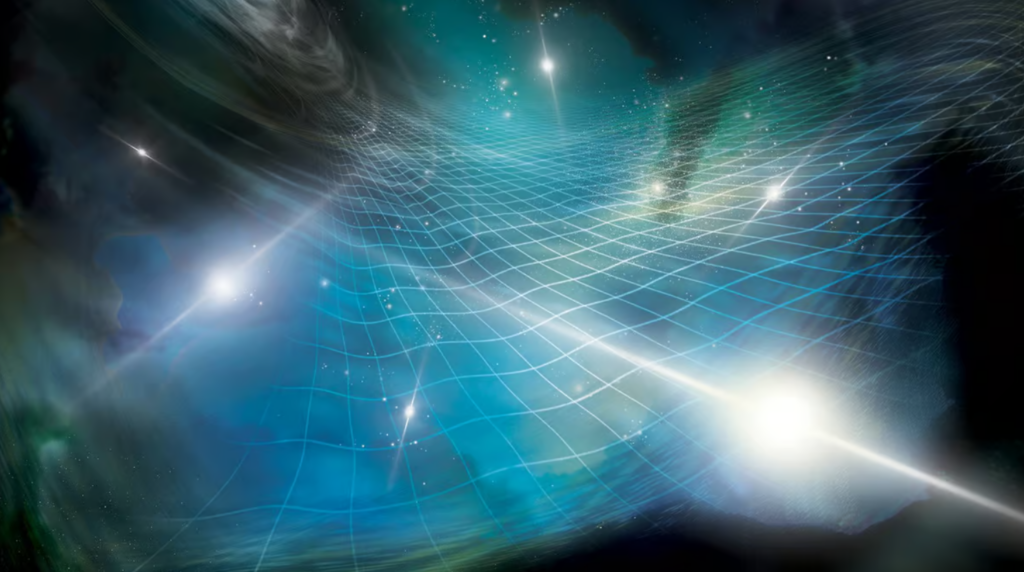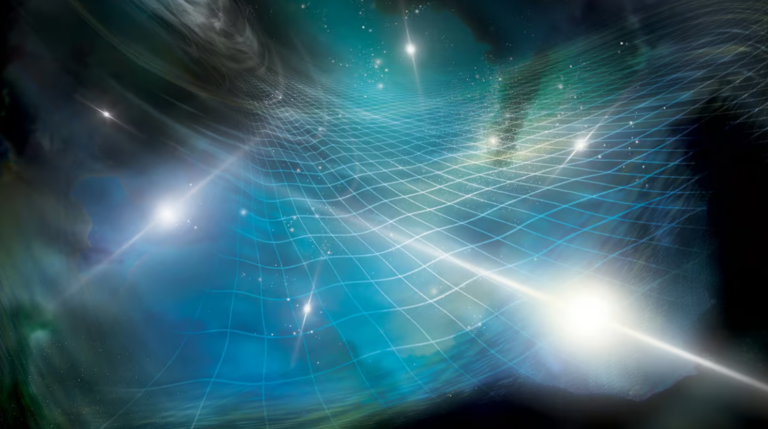Astronomers Remain Mystified by Spacetime Ripples Discovered in 2023: Could They Originate from the Early Universe?
This poses a significant potential issue as numerous signals exhibit considerable similarity.
Scientists are currently in pursuit of the origin of the faint, continuous hum of gravitational waves that were discovered resonating throughout the Milky Way last year. Recent research conducted by the North American Nanohertz Observatory for Gravitational Waves (NANOGrav) collaboration indicates that these waves may have multiple intriguing sources.

The team at NANOGrav strongly believes that these ripples in the fabric of space-time were generated by the merging of supermassive black holes, each with a mass billions of times greater than that of our sun. These black holes are referred to as binary pairs. If this hypothesis proves to be true, further investigations could provide valuable insights into the locations and masses of these celestial giants.
Nevertheless, Juan Urrutia, a co-author of the study from the National Institute of Chemical Physics and Biophysics in Estonia, explains that the discovery of a single binary pair does not necessarily eliminate the possibility of a cosmological origin for the gravitational waves. In their analysis of the NANOGrav data, Urrutia and his colleagues identified three proposed cosmological sources in addition to the hypothesis of orbiting black holes. This suggests that the gravitational wave signal may be a complex combination of various sources.
“This is a big potential problem because many signals are quite similar.”
Cosmological sources for spacetime ripples
The exotic and high-energy cosmological phenomena that occurred in the early universe encompassed “cosmic strings,” “phase transitions,” and “domain walls.” Notably, the latter two are believed to have occurred shortly after the Big Bang, preceding the dispersion of residual radiation throughout the universe. Therefore, if the recent discoveries prove accurate and one of the sources is indeed these domain walls, scientists assert that the detected signal would represent our closest glimpse into the origins of the universe.
Moreover, the cosmological processes elucidated by the new study could contribute to the ongoing quest for understanding dark matter and dark energy, which collectively constitute 95% of the universe but elude direct observation by human eyes.
Urrutia explains, “As domain walls move and evolve, they possess substantial energy and emit gravitational waves.” However, at a certain point, they decay, resulting in the formation of “clumps” of dark matter.
The potential that the detected signal may originate from domain walls is particularly captivating, as these intricate structures were initially proposed more than 50 years ago as a means to explain the significant disparity between matter and antimatter in the universe. Antimatter refers to a type of matter that is essentially the “opposite” of normal, or baryonic, matter, consisting of negative protons and positive electrons, as opposed to positive protons and negative electrons.
What is particularly perplexing about antimatter is that, due to the presumed symmetry between antimatter and baryonic matter, the Big Bang should have had an equal chance of producing both. This implies that our universe should ideally consist of equal amounts of both types of matter. However, this is not the case, as baryonic matter overwhelmingly dominates the cosmos.
Urrutia emphasized the importance of having specific predictions and data interpretation guidelines for the future detectors to fulfill their potential. He mentioned the significant collective effort from the scientific community to ensure the utmost precision in these calculations before the experiments are set to commence.
This research is described in a paper accepted for publication in the journal Physical Review D.
This article is republished from SpaceCom under a Creative Commons license. Read the original article.
Do not forget to share your opinion with us to provide you with the best posts !




0 Comments